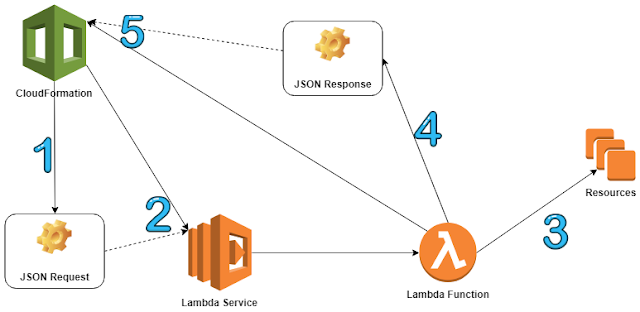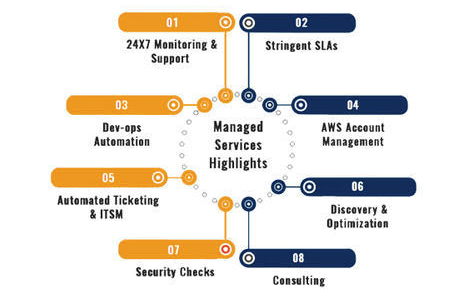What does AWS CloudFormation package do?
Introduction
AWS CloudFormation is a service offered by Amazon Web Services (AWS) that provides an easy way to create and manage a collection of related AWS resources. It enables users to use a template to define and provision infrastructure resources such as EC2 instances, load balancers, and databases. CloudFormation Package is a feature of AWS CloudFormation that simplifies the process of uploading and deploying application code and other artifacts to an AWS environment. In this article, we will explore what AWS CloudFormation Package is, how it works, its benefits, and how to use it effectively.
What is AWS CloudFormation Package?
Definition of CloudFormation Package:
AWS CloudFormation Package is a feature of AWS CloudFormation that facilitates the uploading and deployment of artifacts and application code to an AWS environment. It creates a single Amazon S3 object that contains all the resources required for an application deployment. This object can then be used for deployments and updates of the application code.
Benefits of using CloudFormation Package:
Simplified deployment process: CloudFormation Package simplifies the process of deploying applications to AWS environments by creating a single object that contains all the required resources for deployment.
Faster deployments: CloudFormation Package can upload and deploy application code and artifacts faster than traditional deployment methods.
Improved application consistency: With CloudFormation Package, all the resources required for an application deployment are contained in a single object, ensuring that the deployed application is consistent across all environments.
Increased productivity: CloudFormation Package automates the deployment process, freeing up time for developers to focus on coding and other tasks.
Comparison to traditional deployment methods:
Traditional deployment methods often involve manually uploading and deploying individual files and resources to AWS environments. This can be time-consuming and error-prone, especially for large and complex applications. CloudFormation Package, on the other hand, creates a single object that contains all the resources required for an application deployment, making the deployment process faster and more consistent. Additionally, CloudFormation Package can be automated, further improving productivity and reducing the risk of human error.
How does AWS CloudFormation Package work?Explanation of the packaging process:
The packaging process in AWS CloudFormation involves bundling all the files and resources required for a deployment into a single archive file. The packaging process typically includes the following steps:
Create a YAML or JSON template that defines the AWS resources required for deployment.
Upload any application code or other artifacts to Amazon S3.
Modify the template to reference the S3 location of the uploaded files.
Use the AWS CLI or AWS Management Console to package the template and associated files into a single archive file.
Use the packaged archive file to deploy or update the AWS resources.
Key components of the package:
The key components of an AWS CloudFormation Package include:
AWS CloudFormation template: A YAML or JSON file that defines the AWS resources required for deployment.
Amazon S3 bucket: A storage location for the packaged archive file and any other required artifacts.
Packaged archive file: A ZIP file that contains the AWS CloudFormation template and any referenced artifacts, such as application code or configuration files.
Deployment options for the package:
Once the package has been created, there are several deployment options available, including:
Deploying from the AWS Management Console: Users can deploy the package directly from the AWS Management Console by uploading the packaged archive file.
Deploying using the AWS CLI: Users can deploy the package using the AWS CLI by specifying the S3 location of the packaged archive file.
Integrating with CI/CD tools: CloudFormation Package can be integrated with CI/CD tools such as AWS CodePipeline or Jenkins to automate the deployment process.
Deploying from a CloudFormation Stack: The packaged archive file can be referenced in a CloudFormation Stack and deployed as part of a CloudFormation Stack update or creation.
Steps to create a CloudFormation Package:
To create a CloudFormation Package, follow these steps:
Create a CloudFormation template in JSON or YAML format that defines the AWS resources required for deployment.
Upload any artifacts such as application code or configuration files to an Amazon S3 bucket.
Modify the CloudFormation template to reference the S3 location of the artifacts.
Use the
aws cloudformation packagecommand in the AWS CLI to package the template and artifacts into a ZIP file.Use the resulting packaged ZIP file to deploy or update the AWS resources.
Best practices for creating and deploying a package:
Here are some best practices for creating and deploying a CloudFormation Package:
Use parameterized templates: Parameterize the CloudFormation templates to allow for easy configuration and customization.
Version control templates: Keep track of changes to the CloudFormation templates using a version control system such as Git.
Use IAM roles and policies: Create IAM roles and policies to ensure that CloudFormation has the necessary permissions to deploy the resources.
Use Amazon S3 for storing artifacts: Use Amazon S3 for storing and referencing artifacts required for deployment.
Test and validate templates: Test and validate CloudFormation templates before deploying them to production environments.
Troubleshooting common issues with CloudFormation Package:
Here are some common issues that users may encounter when working with CloudFormation Package and some tips on how to resolve them:
Issues with IAM roles and policies: Make sure that the IAM roles and policies have the necessary permissions to access the required resources.
Incorrect S3 bucket or object names: Double-check that the S3 bucket and object names are correct and that the objects exist in the specified location.
Incorrect CloudFormation template syntax: Check the syntax of the CloudFormation template and ensure that it follows the correct JSON or YAML format.
Package size limitations: CloudFormation Package has a package size limit of 50 MB. If the packaged archive file exceeds this size, consider splitting it into smaller packages or using other deployment methods.
CloudFormation Nested Stacks:
AWS CloudFormation Nested Stacks is a feature that allows developers to create stacks that contain other stacks as resources. Nested Stacks are useful for breaking down complex CloudFormation templates into smaller, more manageable components. This makes it easier to create, update, and delete CloudFormation resources.
CloudFormation StackSets:
AWS CloudFormation StackSets is a feature that enables the deployment of CloudFormation stacks across multiple accounts and regions from a single CloudFormation template. With StackSets, developers can deploy the same set of AWS resources across multiple accounts and regions with a single command.
CloudFormation Change Sets:
AWS CloudFormation Change Sets is a feature that allows developers to preview the changes that will be made to a CloudFormation stack before applying them. Change Sets can be created to preview changes to a stack's resources, parameters, and tags. Developers can review and approve changes before they are applied to the stack, reducing the risk of unintended changes or downtime. Change Sets also enable developers to roll back changes easily if necessary.
Continuous Integration and Deployment (CI/CD):
Continuous Integration and Deployment (CI/CD) is a software development practice that involves integrating code changes and automatically deploying them to production environments. CI/CD enables developers to automate the building, testing, and deployment of applications, improving speed, reliability, and consistency.
Infrastructure as Code (IaC):
Infrastructure as Code (IaC) is a practice of managing and provisioning infrastructure resources through code. With IaC, developers can use tools like AWS CloudFormation to define infrastructure resources and configurations in code, enabling consistent, repeatable deployments, and reducing the risk of manual errors.
Multi-region Deployments:
Multi-region deployments are the process of deploying applications and infrastructure across multiple regions to improve availability, performance, and resilience. With AWS CloudFormation, developers can create templates that deploy resources across multiple regions in a single step. Multi-region deployments can help to reduce the risk of downtime and data loss, increase the speed of application delivery, and improve the user experience.
Rolling back deployments:
Rolling back deployments is the process of undoing changes made during a deployment. With AWS CloudFormation, developers can use Change Sets to preview changes before deploying them and roll back changes if necessary. CloudFormation also provides a feature called Stack Policies, which enables developers to prevent accidental or unwanted changes to CloudFormation stacks, reducing the risk of failed deployments. Additionally, AWS provides services like AWS Backup and Amazon S3 Versioning to enable easy and reliable data backup and restore.
Conclusion
Summary of CloudFormation Package benefits:
AWS CloudFormation Package is a powerful feature that provides several benefits, including:
Simplifying deployment: CloudFormation Package enables developers to package application code and dependencies along with CloudFormation templates, making deployment easier and more efficient.
Automating deployment: CloudFormation Package can be integrated into CI/CD pipelines to automate the deployment process, enabling developers to deliver new features and functionality to customers faster and with greater reliability.
Improving consistency: With CloudFormation Package, developers can ensure consistent deployments across environments and reduce the risk of manual errors or inconsistencies.
Enabling version control: CloudFormation Package supports version control of templates, enabling developers to keep track of changes and easily roll back deployments if necessary.
Supporting multi-region deployments: CloudFormation Package can deploy resources across multiple regions, improving the resilience and availability of applications.
Final thoughts and future developments:
AWS CloudFormation Package is an essential tool for deploying AWS resources in a consistent and repeatable way. It enables developers to automate the deployment process and improve the speed, reliability, and consistency of deployments. AWS continues to invest in CloudFormation Package and is constantly adding new features to enhance its functionality and ease of use. As the adoption of AWS services continues to grow, it is likely that CloudFormation Package will become even more important for managing and deploying AWS resources at scale.
Read more : What are the benefits of AWS CloudFormation?
Read more : What is AWS CloudFormation?




Comments
Post a Comment